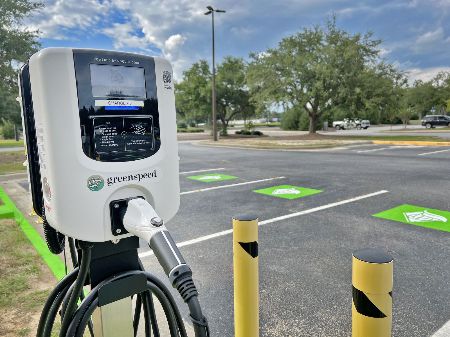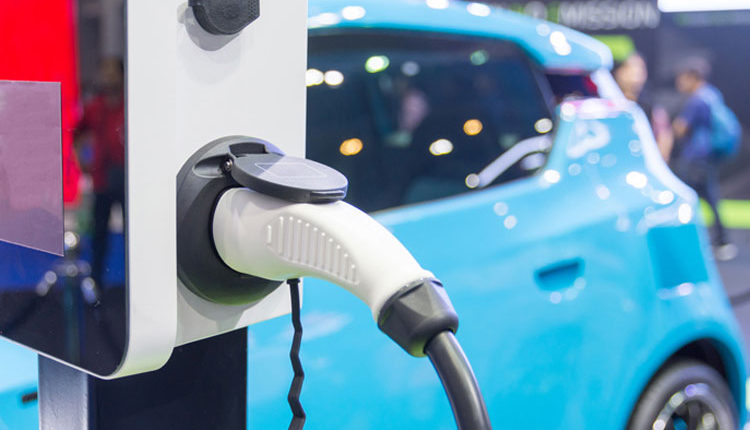What’s Driving the Growth of EV Infrastructure? Buy EV Charging news for Key Updates
What’s Driving the Growth of EV Infrastructure? Buy EV Charging news for Key Updates
Blog Article
Why 2024 Is a Game-Changer for EV Charging: Trends and Insights
As we approach 2024, the electric vehicle (EV) billing landscape is set for significant transformation, driven by the spreading of ultra-fast billing stations and innovations in clever charging innovations. This development is underpinned by boosting investments from both public and personal industries, which guarantee to ease longstanding problems such as variety anxiety. In addition, the consolidation of renewable resource resources together with favorable federal government policies is most likely to redefine the sustainability and ease of access of EV infrastructure. These developments elevate crucial questions concerning the future of EV adoption and the effects for industries and customers alike.

Development of Ultra-Fast Charging Stations
How quickly are ultra-fast billing terminals changing the electric lorry landscape? The expansion of ultra-fast charging stations is a critical growth in the EV field, substantially enhancing the comfort and usefulness of electrical automobile ownership. These terminals, capable of delivering billing rates up to 350 kW, can charge an EV's battery to around 80% in as low as 15-30 minutes, efficiently decreasing range anxiety among customers.
The growth of ultra-fast billing framework is being driven by both personal and public investments, mirroring a critical shift towards sustainable transportation remedies. Significant automotive manufacturers and energy business are teaming up to install these terminals along major freeways and urban facilities, developing a considerable network that supports long-distance travel and daily usage.
Moreover, developments in battery innovation are complementing this development, permitting cars to take complete benefit of the increased charging speeds. As the number of ultra-fast charging terminals remains to climb, they are expected to play an important function in speeding up EV fostering, promoting a change in the direction of a cleaner and even more lasting future. This growth not just boosts user experience but likewise strengthens the stability of electric vehicles as a mainstream transportation alternative.
Advances in Smart Charging Modern Technology
With the increasing integration of digital modern technology in the electric automobile market, breakthroughs in smart billing modern technology are significantly improving the efficiency and convenience of EV charging. Smart charging systems take advantage of connection and information analytics to enhance the billing process, allowing users to charge their automobiles when electricity rates are least expensive and require on the grid is marginal.

Interoperability is one more essential improvement, as brand-new criteria and procedures permit different EV designs and billing terminals to connect flawlessly. This boosts individual experience by offering more obtainable billing options throughout different networks. Ultimately, the evolution of clever billing innovation represents a significant step towards a much more lasting and user-friendly EV environment, leading the way for wider adoption and integration into day-to-day live.
Integration of Renewable Resource Resources
The integration of eco-friendly power sources right into EV charging framework is coming to be increasingly essential as the demand for lasting remedies grows. This trend not just helps in reducing the carbon footprint associated with electrical vehicle charging however likewise improves More Info grid durability by promoting decentralized energy production.
Solar and wind power go to the center of this combination, with many billing stations currently being or incorporating solar panels integrated in proximity to wind ranches. These renewable sources can create clean electricity, supplying a lasting energy supply for EVs. Moreover, improvements in power storage space technologies, such as batteries, assist in the reliable storage of excess energy generated during height manufacturing hours, making sure that charging stations can operate efficiently also when eco-friendly generation is reduced.

Growth of Charging Framework
As electrical car (EV) fostering increases, the expansion of charging infrastructure has actually come to be a crucial emphasis for stakeholders across the automobile and energy industries - EV Charging news. The requirement for a durable and available charging network is vital to sustain the growing number of EVs when driving and to alleviate variety anxiousness amongst customers
In 2024, we are witnessing substantial financial investments from both public entities and exclusive business targeted at improving the billing landscape. This includes the setup of fast-charging stations along freeways and in metropolitan facilities, which can charge EVs in a fraction of the moment contrasted to conventional chargers. Additionally, collaborations in between automakers and energy carriers are helping with the implementation of ingenious charging solutions to satisfy diverse consumer needs.
Additionally, advancements in innovation are bring about smarter charging systems that maximize energy circulation and reduce expenses. The integration of these systems is essential for fitting the expected increase sought after as more customers transition to electrical flexibility. The expansion of charging infrastructure not only supports the EV market yet also plays a crucial role in achieving broader sustainability objectives, making it a critical component in the evolution of transportation.
Federal Government Plans and Incentives
Government policies and motivations are progressively forming the landscape of electric automobile (EV) fostering and charging facilities growth. Governments worldwide are acknowledging the urgent demand to shift to cleaner transportation choices, resulting in the implementation of different efforts targeted at speeding up EV fostering. These plans usually include tax debts, get more refunds, and gives for consumers and businesses that buy electric cars and charging stations.
In enhancement to route financial incentives, lots of federal governments are developing enthusiastic targets for EV sales and mandating the installment of billing framework in brand-new growths. A number of countries have devoted to phasing out inner combustion engine vehicles within the following years, developing a feeling of seriousness that drives both customers and makers toward electrical alternatives.
Furthermore, public-private collaborations are becoming a crucial component of these efforts, assisting in financial investment accountable networks and making certain extensive gain access to. By lining up regulatory structures with financial incentives, governments are not just cultivating a favorable atmosphere for EV adoption yet also attending to worries related to range anxiousness and charging accessibility. This robust policy landscape is set to make 2024 a pivotal year in the change to electrical wheelchair.
Conclusion
The year 2024 is readied to reinvent the electric car charging landscape with the proliferation of ultra-fast charging terminals, developments in wise charging innovations, and the combination of renewable resource sources. The growth of billing framework, reinforced by encouraging government plans and incentives, will certainly address array anxiousness and improve the appeal of electrical car possession. Collectively, these advancements will certainly foster a sustainable and available setting for electric lorry adoption, guaranteeing a robust future for the market.
As we come close to 2024, the electric lorry (EV) billing landscape is set for significant change, driven by the proliferation of ultra-fast billing terminals and developments in smart charging innovations. The spreading of ultra-fast charging stations is an essential growth in the EV market, dramatically navigate here enhancing the comfort and feasibility of electrical lorry ownership. Smart charging technologies facilitate remote monitoring and management, making it possible for customers to schedule billing sessions using mobile applications.
Government plans and incentives are increasingly shaping the landscape of electrical vehicle (EV) adoption and charging infrastructure advancement.The year 2024 is set to revolutionize the electric lorry billing landscape via the expansion of ultra-fast billing stations, developments in clever billing innovations, and the integration of sustainable power resources.
Report this page